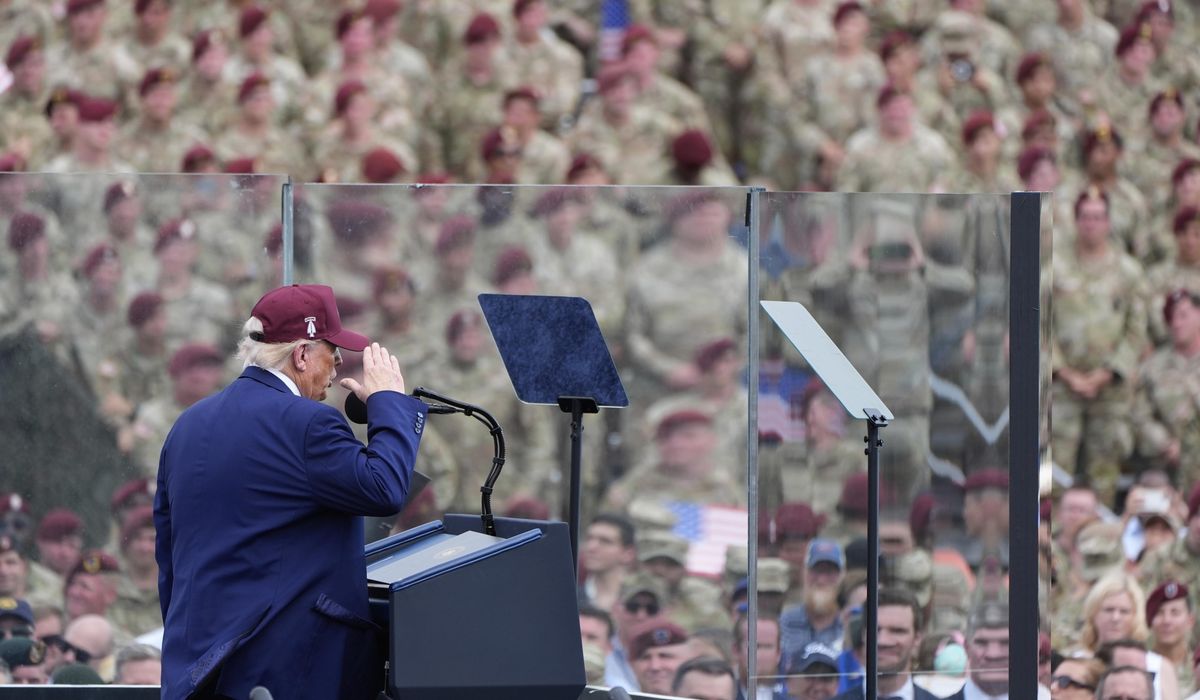


The Army is restoring the identities of seven posts that were changed during the Biden administration as part of a purge of military bases named for leaders of the Confederacy during the Civil War.
Fort Pickett in Virginia, renamed Fort Barfoot under Mr. Biden, was originally named for Confederate General George Pickett.
It will now honor 1st Lt. Vernon W. Pickett, a World War II soldier who destroyed Nazi positions with grenades in France. He was later captured by the Germans but escaped and made it back to his unit. Lt. Pickett was later killed in combat and awarded the Distinguished Service Cross.
Fort Hood, renamed Fort Cavazos under Mr. Biden, is Fort Hood again, but this time in honor of Col. Richard B. Hood, who was awarded the Distinguished Service Cross in World War I.
Army officials on Tuesday said then-Capt. Richard Hood directed artillery fire under intense German machine gun attacks. After his gun crew was lost to enemy fire, he reorganized and returned fire within minutes, restoring combat capability. The Army post in Texas had originally been named for Confederate Gen. John Bell Hood.
Fort Gordon, Fort Eisenhower under Mr. Biden, is back, this time in honor of Master Sgt. Gary Gordon, who received a posthumous Medal of Honor for valor during the 1993 Battle of Mogadishu, better known as “Black Hawk Down.”
He defended wounded crew members at a helicopter crash site and held off advancing enemy forces until exhausting all of his ammunition. The Army post near Augusta, Georgia, was originally named for Confederate Gen. John Brown Gordon.
The congressionally authorized Naming Commission transformed Fort Lee in Virginia to Fort Greg-Addams. It was originally named for Gen. Robert E. Lee. The post will now honor Private Fitz Lee. He was awarded the Medal of Honor for heroism during the Spanish-American War while serving with the all-black 10th Cavalry Regiment, the famed Buffalo Soldiers.
Fort Polk in Louisiana will be named for Gen. James H. Polk, who was awarded the Silver Star in World War II as the commanding officer of the 3rd Cavalry Group [Mechanized.] His unit, designated as Task Force Polk, led reconnaissance missions under fire and spearheaded Gen. George Patton’s Third Army as it advanced through Europe. It had been named for Confederate Gen. Leonidas Polk until the Naming Commission renamed it to honor World War I Medal of Honor recipient Sgt. William Henry Johnson.
Fort Rucker in Alabama was originally named for Confederate Col. Edmund Rucker. It was changed to Fort Novosel to honor Chief Warrant Officer Michael J. Novosel, an Army aviator and holder of the Medal of Honor. The post will go back to being called Fort Rucker, but now it will honor Capt. Edward W. Rucker. He was a World War I flyer awarded the Distinguished Service Cross for his missions behind enemy lines against numerically superior German forces, Army officials said.
Fort A.P. Hill, located north of Richmond, was renamed Fort Walker in honor of Mary Edwards, an American abolitionist and Civil War surgeon. Although its original namesake was a Confederate general, the post, which will be called Fort Anderson-Pinn-Hill, will be named for Lt. Col. Edward Hill, 1st Sgt. Robert A. Pinn and Private Bruce Anderson. They were each awarded the Medal of Honor during the Civil War for their combat heroism during the battles of Cold Harbor and Chaffin’s Farm in Virginia and the Battle of Fort Fisher in North Carolina.
• Mike Glenn can be reached at mglenn@washingtontimes.com.
